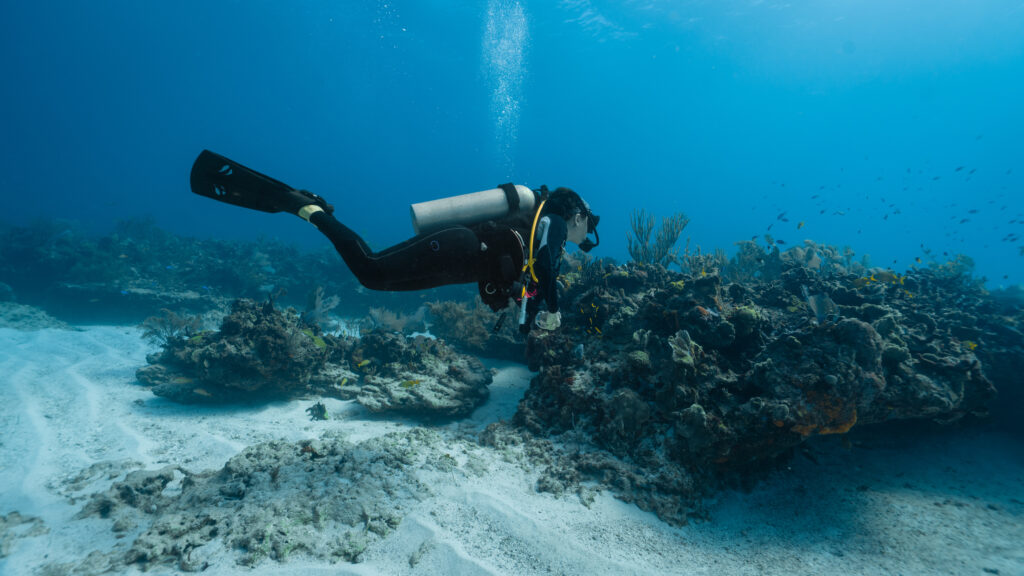What is a Scuba Diver?

What is a Scuba Diver? A scuba diver is a person who engages in the recreational or professional activity of swimming underwater using SCUBA equipment. The term “scuba” is an acronym for “self-contained underwater breathing apparatus,” which allows scuba divers to breathe comfortably beneath the water’s surface while exploring the aquatic world at their leisure. […]
What is Absolute Pressure in Scuba Diving Context?

Absolute pressure, a term frequently used in the field of scuba diving, refers to the total static pressure at a particular point. It is a vital concept that divers need to understand and appreciate to ensure safety during their underwater adventures. In technical terms, absolute pressure is the sum of the atmospheric pressure and the pressure due to any fluid column above the point of measurement. It is always measured relative to a perfect vacuum, which is devoid of all matter and hence bears a pressure of zero.
What is Acetal Resin?

Acetal resin, a high-performance polymer, has risen to prominence in the realm of scuba diving, revolutionizing various aspects of the sport. This powerful material, also known as polyoxymethylene (POM), is known for its extraordinary strength, resilience, and excellent dimensional stability, properties which have made it an ideal candidate to replace certain lightweight metals in many diving applications.
What is a A-Clamp Adaptor for Scuba Diving?

Scuba diving is a mesmerizing endeavor that introduces enthusiasts to an enchanting world beneath the water’s surface. The equipment used in scuba diving not only contributes to the safety and comfort of the diver but also enables seamless exploration. One such component is the A-clamp adaptor, which plays an integral role in connecting the diving regulator or filling whip with the diving cylinder. This entry delves into the intriguing world of the A-clamp adaptor, its significance, usage, and relation with the DIN thread connection and the CGA 850 “international” connection cylinder valve.
What is a Active Addition Semi-Closed Circuit Rebreather Systems?

Active Addition Semi-Closed Circuit Rebreather (AASCCR) systems represent a sophisticated evolution in scuba diving technology, combining the advantages of closed-circuit rebreathers with innovations that enhance safety and usability. These systems are designed to optimally recycle exhaled gases, thereby extending dive times, reducing gas consumption, and minimizing decompression obligations. By actively managing the gas mix in the breathing loop, AASCCR systems offer divers a unique balance between simplicity and efficiency, making them particularly valuable in extended or deep diving scenarios.
What is a A-Frame?

An A-Frame is a ubiquitous fixture in the scuba diving world, as essential to many diving operations as the equipment divers wear themselves. This structural device plays a crucial role in the launch and recovery processes of various underwater apparatus. These systems include diving bells, stages, anchors, or remotely operated vehicles (ROVs)—all equipment frequently used in diving operations.
What is Water Pressure when Diving?

Water pressure is a crucial concept in scuba diving, defined as the force per unit area exerted by the weight of water. The weight of the water column above a certain depth creates this pressure. This pressure is not just from the top down, but it is exerted equally from all directions. The deeper a diver descends, the greater the water pressure exerted on their body.
What is a Forward Roll Entry?

The forward roll entry, a staple technique for scuba divers, is a safe and efficient way of entering the water from a boat or a pier. As a key skill for divers of all levels, it is essential to master this technique for both safety and comfort. This entry will discuss the benefits of using the forward roll entry, the steps to execute it correctly, and potential hazards and tips to avoid them.
What is a J Cylinder?

A J cylinder is a type of scuba diving tank known for its distinctive size and capacity. It is a critical component of a diver’s breathing apparatus, holding compressed air that allows for underwater respiration. These cylinders are integral to both recreational and professional diving, providing the necessary air supply for extended periods underwater. Named after its shape and size, the J cylinder has become a standard in the diving community due to its reliability and capacity, making it suitable for various types of diving activities, from shallow recreational dives to deeper, more technical dives.
What is a Drop Weight?

A drop weight, a fundamental tool in scuba diving, plays a crucial role in managing a diver’s buoyancy. By adding or removing weight, divers can achieve neutral buoyancy, allowing them to maintain a stable position underwater without floating upwards or sinking uncontrollably. This balance is essential for conserving energy, enhancing underwater navigation, and ensuring safety during a dive. Drop weights can be attached to a diver’s belt, integrated into buoyancy control devices (BCDs), or even strapped to ankles, depending on individual preferences and specific diving conditions.
